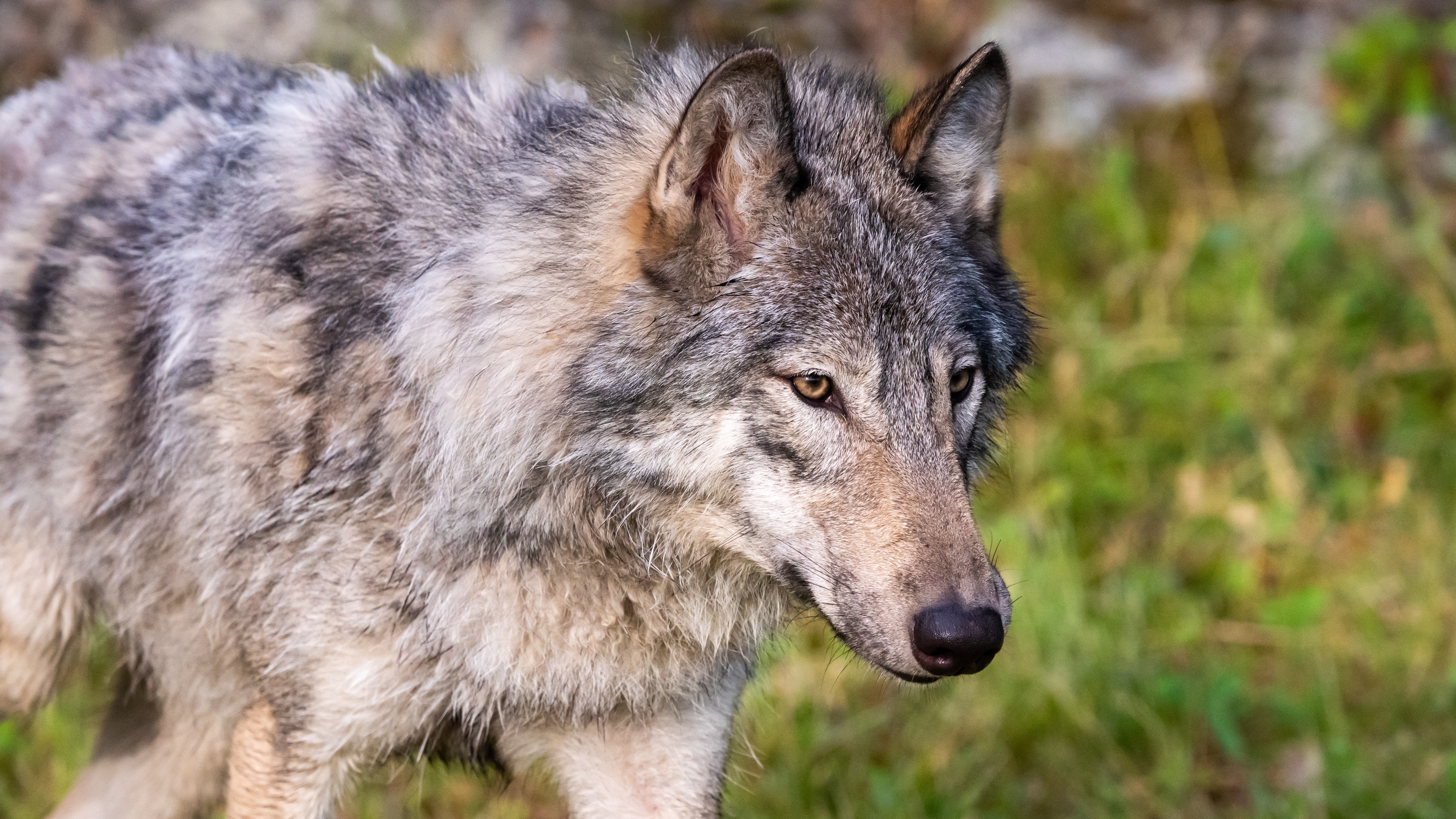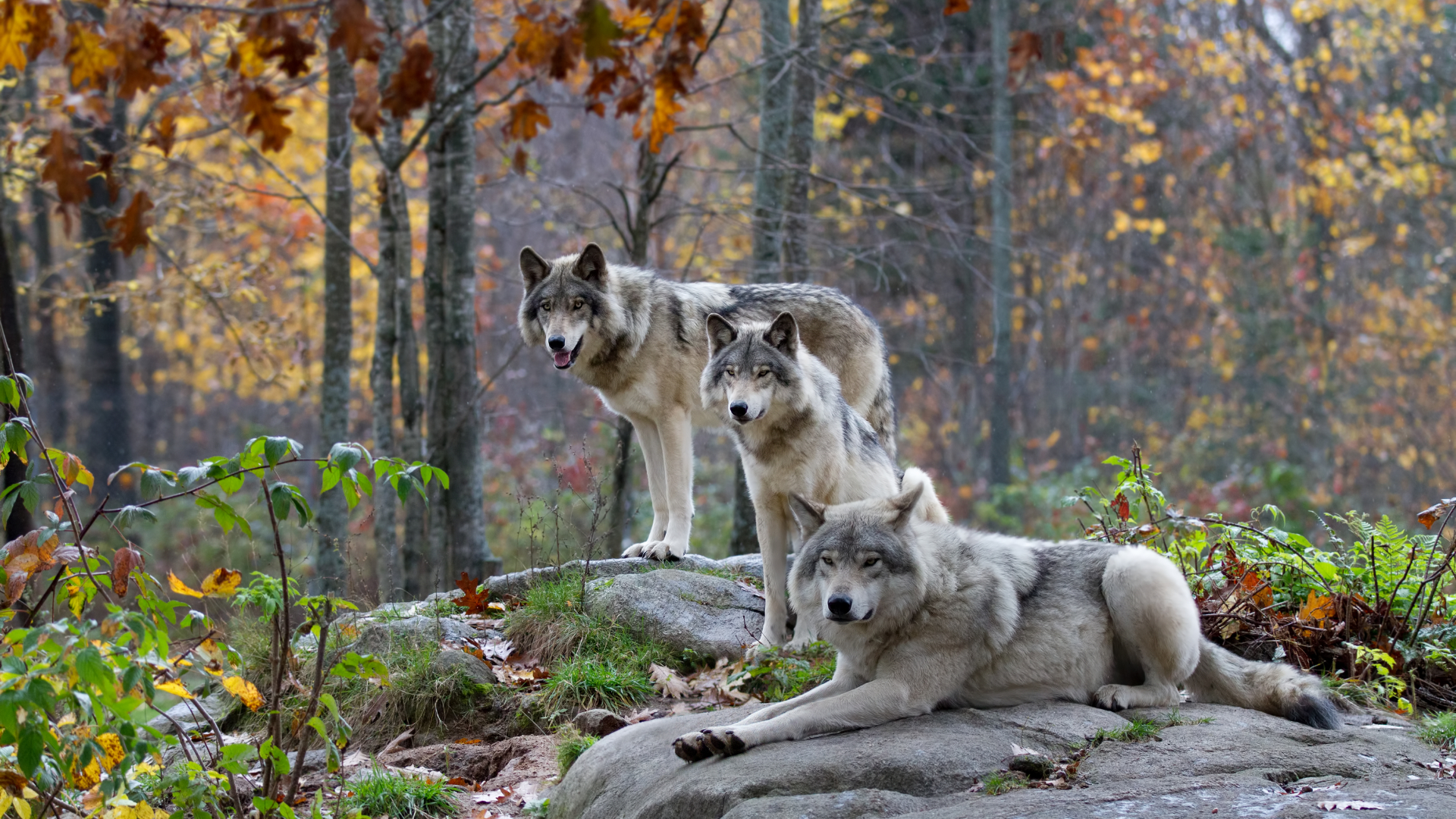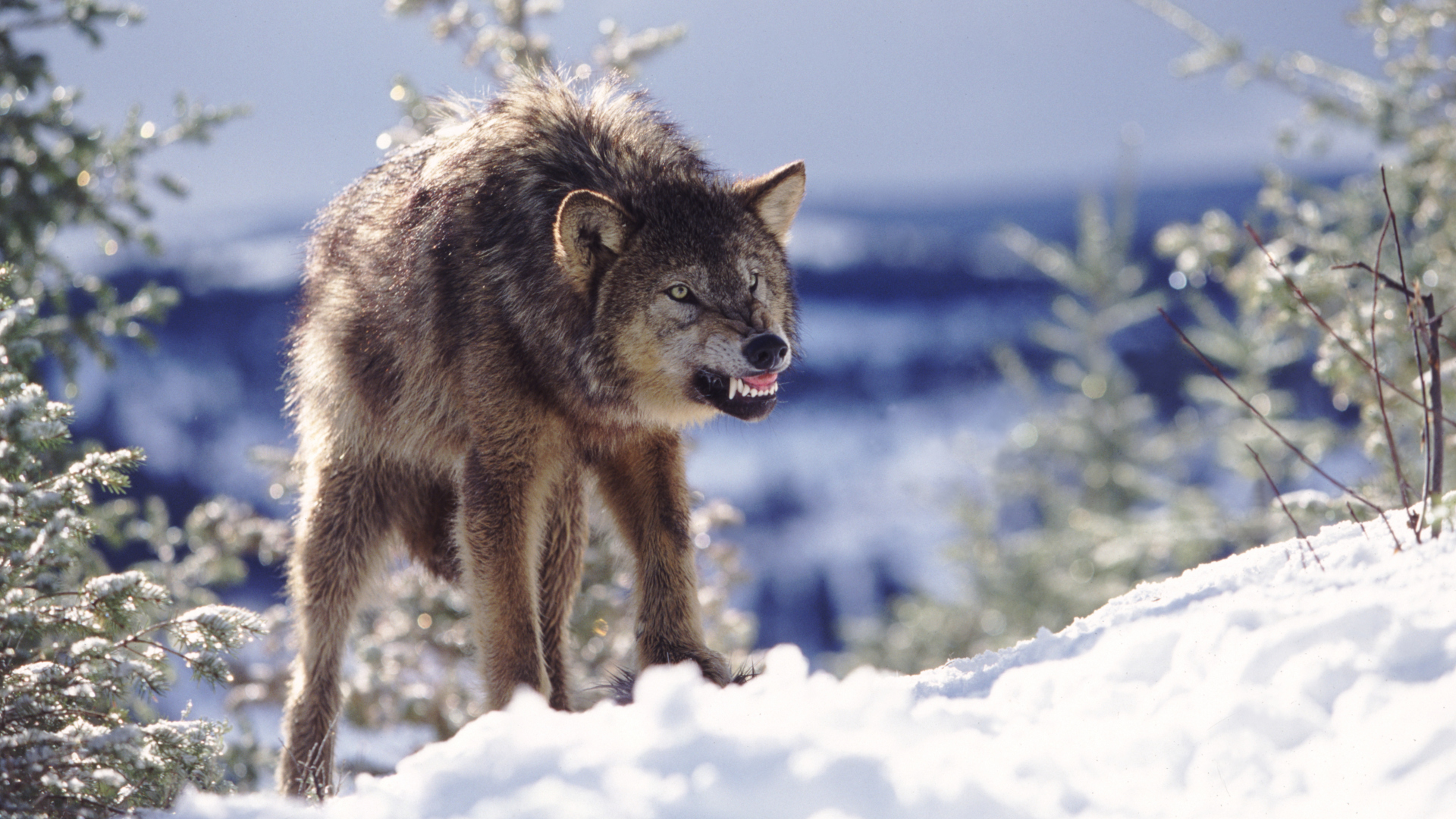Does bear spray work on wolves?
A look at both the theoretical and practical nuances of using bear spray against a wolf

A few years ago, hikers in Colorado had no idea that wolves were going to be on the list of potential predators they may need to be vigilant of on the trail. Same goes for anyone hiking around the greater Yellowstone area prior to the mid 1990s. Today though, if you’re hiking in those areas there’s a tiny chance, but a chance nonetheless, that you might encounter a wolf on the trail.
For a wildlife lover, seeing a wolf in the wild would be a very precious occurrence indeed, and you’ll do well to be hiking in Colorado and Yellowstone National Park with your binoculars at the ready these days. Thanks to decades of popular culture and literary references to wolves as evil, fang-gnashing predators, however, you might be feeling a bit fearful about hitting the trails in the Rockies, Alaska and parts of Canada. Regardless of where you fall on the excited/terrified spectrum, when it comes to hiking in wolf country, you’ll want to be prepared.
Being prepared to encounter a wolf largely involves staying aware, keeping your dog close and not giving into the instinct to run if you see one; but you might also be asking yourself, does bear spray work on wolves? After all, bears both black and brown are to be found in many areas where wolves roam, meaning you probably already hike with a canister of bear spray on your person. Let’s take a closer look at whether bear spray works on wolves, and what to know about using it.

Does bear spray work on wolves?
Though it’s named to give the impression that it’s intended solely for bruins, bear spray will work against just about any mammal with eyes that might attack you, such as a starving mountain lion, a rabid coyote, a charging moose, an aggressive dog (most common) and, yes, a wolf.
Bear spray is an aerosol deterrent loaded with highly concentrated capsaicin (that’s the active component of chili peppers) which, when deployed, releases a cloud of vapor that incapacitates the subject by irritating its mucous membranes, eyes, mouth, and ears, giving you time to hotfoot it to safety.
In theory, there’s no reason why a wolf would be immune to a cloud of vicious, peppery vapor and in fact, Colorado Parks and Wildlife suggests carrying bear spray in its Living with Wolves advice (though it should be noted that it alternately advises carrying a sturdy walking stick for self-defense).
In practice, bear spray has successfully been deployed against wolves. As recently as 2021, an Idaho Falls woman made headlines when she used bear spray to protect her three dogs against two wolves that fancied her fur babies as a tasty snack.
Advnture Newsletter
All the latest inspiration, tips and guides to help you plan your next Advnture!
So yes, bear spray can work against a wolf, however let’s be clear that a wolf is very, very unlikely to attack you. First of all, there are very few wolves in the wild (just 10 have been released in Colorado at the time of writing) and according to Sarah Hoy, a researcher on the Isle Royale Wolf-Moose Project, the evidence so far is that an increase in wolves doesn’t correlate with increased attacks on people.
“A lot of the evidence suggests that wolves are not a threat to human safety in most parts of North America in Europe. Even though the number of wolves has increased greatly in Europe, there aren’t loads of wolf attacks on peoples” she says, advising that you’re much more likely to hurt yourself slipping and falling on a hiking trail than you are at the mercy of a snarling wolf.
“I would say if you are lucky enough to see a wolf then you are lucky. Treat them like any other wild animal. Give them space and respect and enjoy that fleeting opportunity because it’s probably going to disappear into the forest pretty quickly.”
A 2002 bulletin by the Alaska Department of Fish and Game Wildlife (ADFG) found just 80 wolf/human interactions in a 60 year period, only 25 of which involved unprovoked attacks by a healthy wolf. In fact, we recently reported on the bizarre case of a shirtless tourist who was caught chasing a wolf at Yellowstone, something we don’t recommend, and significantly contests any argument that wolves are a serious threat. That said, a wolf may attack your dog, even if you have it secured on a leash. Wolves do not like domesticated dogs.

How to use bear spray on a wolf
If you do find yourself facing off against a wolf, you could deploy bear spray, however it might be more appropriate to use dog deterrent spray such as this one on Amazon which isn’t quite as strong as what you’d need to arm yourself against a ravenous grizzly bear, but works on aggressive dogs (and remember, wolves are dogs). This spray works up to 12 feet and if a wolf gets within that range and is acting hostile towards your pet, you would spray directly towards its eyes rather than slightly downwards the way you would with a bear. Once you’ve deployed the spray, it’s time for you to leave the wolf alone and get yourself to safety.
What’s important in this highly unlikely scenario is that you don’t just start spraying bear or dog spray around the wild as a precautionary measure. As long as a wolf, or any other mammal, is moving away from you or minding its own business, it shouldn’t be perceived as a threat and spraying wildlife that’s not acting aggressively could be considered wildlife harassment which in most places would land you with a fine.
Spraying bear spray around your tent and campsite or on your clothing and backpack as a deterrent is also a no. Doing this increases the possibility of your own exposure to bear spray, and according to the North American Bear Center might even attract bears to your camp.
In conclusion, bear spray will work against a wolf, you'll probably never have to use it, but if you hike with your dog in wolf country, it might be worth carrying it as a precaution.
Julia Clarke is a staff writer for Advnture.com and the author of the book Restorative Yoga for Beginners. She loves to explore mountains on foot, bike, skis and belay and then recover on the the yoga mat. Julia graduated with a degree in journalism in 2004 and spent eight years working as a radio presenter in Kansas City, Vermont, Boston and New York City before discovering the joys of the Rocky Mountains. She then detoured west to Colorado and enjoyed 11 years teaching yoga in Vail before returning to her hometown of Glasgow, Scotland in 2020 to focus on family and writing.

